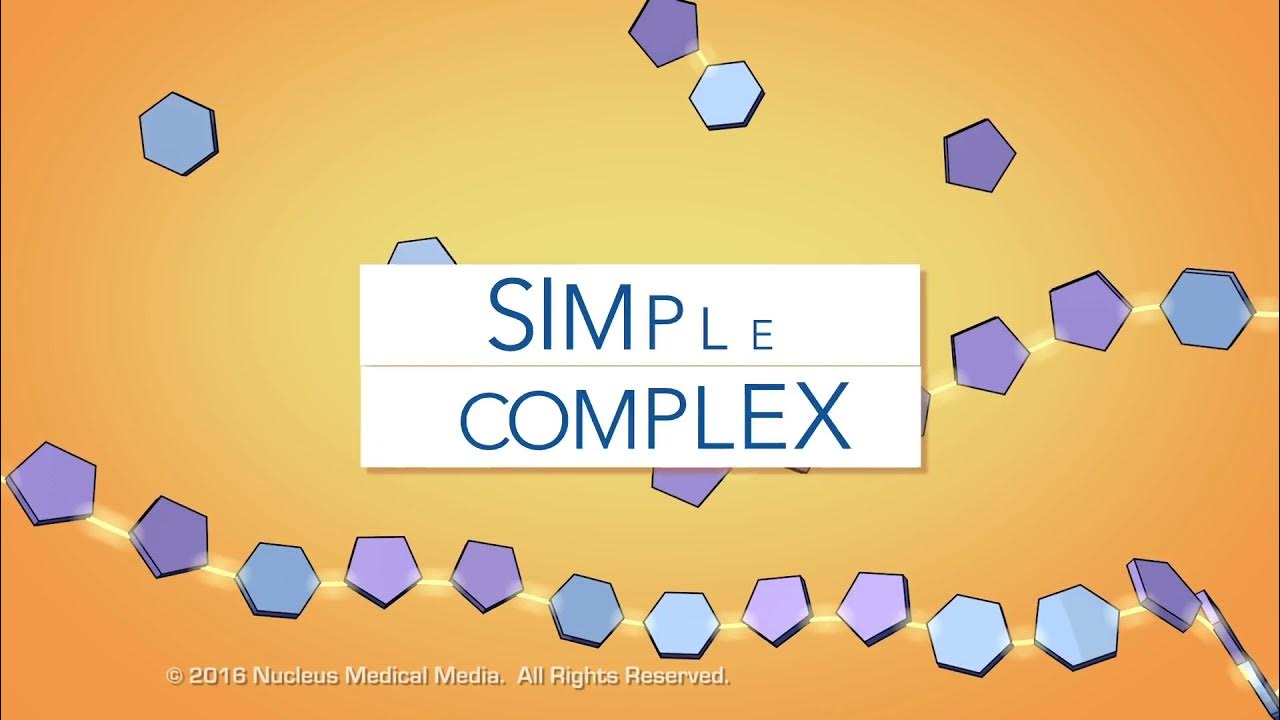Chemia życia 3 🧪 Węglowodany czyli cukry 🍬 - biologia matura rozszerzona
Summary
TLDRThis video explores the role of carbohydrates, including sugars and polysaccharides, in living organisms. It covers the structure, types, and functions of carbohydrates, explaining monosaccharides (such as glucose and fructose), disaccharides (like sucrose and lactose), and polysaccharides (including starch and cellulose). The video also delves into the biochemical properties of these compounds, like solubility, osmosis, and their role in energy storage and structural support. It concludes with experiments for detecting starch and simple sugars, emphasizing the importance of practical learning for a deeper understanding of biochemistry.
Takeaways
- 😀 Carbohydrates, also known as sugars or saccharides, are organic compounds made up of carbon, hydrogen, and oxygen, typically in the form of carbon chains with hydroxyl groups.
- 😀 Carbohydrates can be categorized into monosaccharides, disaccharides, and polysaccharides based on their structure, with monosaccharides being simple sugars like glucose, galactose, and fructose.
- 😀 Simple sugars, such as glucose, are highly soluble in water, sweet-tasting, and osmotically active, which means they cause the movement of water through osmosis.
- 😀 Glucose is a critical energy source for the brain and nervous system. A lack of glucose can lead to hypoglycemia, resulting in symptoms like confusion and loss of coordination.
- 😀 Disaccharides are formed by combining two simple sugars. Examples include sucrose (glucose + fructose), lactose (glucose + galactose), and maltose (glucose + glucose).
- 😀 Polysaccharides, like starch and glycogen, are long chains of glucose molecules and serve as energy reserves in plants and animals, respectively.
- 😀 Starch is a plant polysaccharide consisting of amylose (twisted chains) and amylopectin (branched chains), and it is primarily found in tubers, grains, and seeds.
- 😀 Glycogen, a polysaccharide found in animals, is more branched than starch, which allows for quicker energy release, particularly in muscles and the liver.
- 😀 Cellulose and chitin are polysaccharides composed of beta-glucose and are used as structural materials in plants (cellulose) and fungi/arthropods (chitin). They are not digestible by most organisms.
- 😀 The structure of polysaccharides directly impacts their function. For example, the branched structure of glycogen facilitates rapid energy mobilization, while the compact, unbranched structure of cellulose provides mechanical strength in plant cell walls.
Q & A
What are carbohydrates, and what elements are they made of?
-Carbohydrates, also known as sugars or saccharides, are organic compounds primarily made of carbon, hydrogen, and oxygen. They consist of carbon chains with hydroxyl groups, and depending on the presence of either an aldehyde or ketone group, they are classified as aldoses or ketoses.
What is the difference between aldose and ketose sugars?
-Aldose sugars contain an aldehyde group, whereas ketose sugars have a ketone group. This distinction is based on the structure of the sugar molecule, affecting its chemical properties.
Why do sugars exist in a cyclic form in biological systems?
-In biological systems, sugars tend to form a cyclic structure when dissolved in water or bodily fluids because biochemical reactions typically take place in solution. This ring form is more stable and is commonly seen in textbooks and biological contexts.
What are the main functions of carbohydrates in living organisms?
-Carbohydrates serve two main functions: providing energy as a nutritional source and acting as building material for the body, supporting structural functions in cells and tissues.
What are monosaccharides, and how are they categorized?
-Monosaccharides are simple sugars that are highly soluble in water and sweet in taste. They are classified based on the number of carbon atoms they contain, such as trioses (3 carbons), pentoses (5 carbons), and hexoses (6 carbons). Examples include ribose, deoxyribose, glucose, and fructose.
How does glucose function in the body?
-Glucose is a primary source of energy, especially for the brain and nervous system. It is crucial to maintain normal blood glucose levels for proper brain function, and low blood glucose (hypoglycemia) can lead to cognitive disturbances and other symptoms.
What are disaccharides, and can you give examples?
-Disaccharides are sugars made from two monosaccharides. Examples include sucrose (glucose + fructose), lactose (glucose + galactose), and maltose (glucose + glucose). Each serves different functions, such as energy storage and transport in plants.
What is the role of polysaccharides, and how are they different from simple sugars?
-Polysaccharides are complex sugars made up of long chains of monosaccharides, usually glucose. They serve as energy storage (e.g., starch and glycogen) and structural support (e.g., cellulose and chitin). Unlike simple sugars, polysaccharides are not osmotically active and do not affect the cell's water balance.
Why is glycogen structure more suitable for energy release than starch?
-Glycogen has a highly branched structure, which allows for quicker breakdown and release of glucose molecules from multiple ends at once, making it more effective for rapid energy release compared to starch, which has fewer branching points.
How can starch and simple sugars be detected experimentally?
-Starch can be detected using Lugol's iodine solution, which turns blue in the presence of starch. Simple sugars or reducing sugars can be detected using Fehling's or Benedict's reagent, which changes color (from blue to brick red) when heated in the presence of simple sugars.
Outlines

This section is available to paid users only. Please upgrade to access this part.
Upgrade NowMindmap

This section is available to paid users only. Please upgrade to access this part.
Upgrade NowKeywords

This section is available to paid users only. Please upgrade to access this part.
Upgrade NowHighlights

This section is available to paid users only. Please upgrade to access this part.
Upgrade NowTranscripts

This section is available to paid users only. Please upgrade to access this part.
Upgrade Now5.0 / 5 (0 votes)





